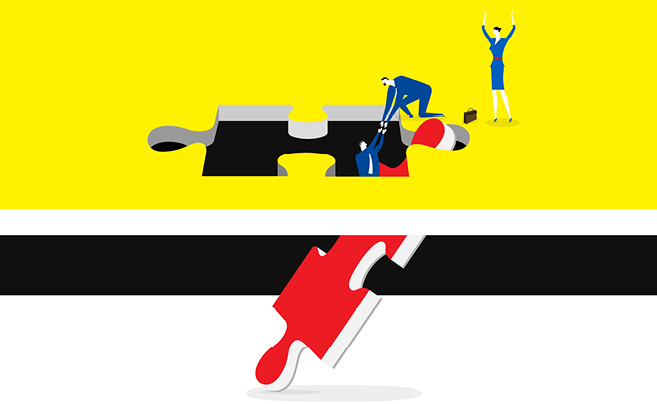The concept of accountability is a two-edged sword. On the one hand, it drives results that would not be achieved if nobody ‘owned’ the outcome. On the other hand, accountability can do a lot of damage when things go wrong and efforts are made to hold someone accountable. Most of us don’t believe it’s our fault and almost always, the root cause is complex.
For this reason, we spend a huge amount of energy in our corporate life obfuscating accountability when things haven’t worked out as expected. The problem with this is that it’s almost impossible to get to the root cause of an operating problem, because there is a lack of transparency.
This is best demonstrated in the airline industry. When a plane goes down, particularly if there are fatalities, there is often a rush to blame someone, mostly to protect the airline involved from future litigation. But in spite of the huge stakes involved, the airline industry is adept at identifying the root causes of problems and putting changes in place to prevent them recurring. They have an attitude that says human error is inevitable, therefore we must put in place operating processes to protect us from human error.
This concept contains the seeds of a way forward for us in other business sectors. If we accept that human error is inevitable and therefore we must make it impossible to occur, we have the opportunity to tangibly improve our business performance.
Five key ways to foster a ‘no-blame’ culture include:
- Define behavioural standards that lead to outcomes as a first principle, rather than the outcomes themselves.
- Manage people with more regard to agreed behaviour than actual results.
- When the results are not there, treat it as a failure of process, not failure of someone.
- Engage everyone to find ways to prevent the failure recurring by establishing a new behavioural model.
- Encourage transparency in reporting by not penalising human error.
The area where we have seen the most progress with this issue is in occupational health and safety (OHS). It’s very common now to have an induction to a business premises, even if it’s an office environment. We are told where the evacuation points are in case of emergency, as well as the signing in and out processes, which are also important and actively managed.
Such measures have contributed to the dramatic fall of workplace injuries and underline the way forward in operational performance. We focus not so much on outcomes, but on behaviour. If someone gets hit on the head with a heavy object, we don’t discipline them, but instead introduce hard hats as a requirement. After that, we manage behaviour — wearing a hard hat — rather than outcomes — getting hit on the head.
How does that relate to business performance? Too often, managers are rewarded or penalised in terms of results and because of this, the risk of short cuts or inappropriate management decisions increases significantly. This is particularly true where certain key performance indicators are valued over others and reporting requirements reign supreme. Is customer service performance the main goal? Watch inventory or overtime go up. Are we behind on output? Cancel maintenance shifts and produce instead.
A no-blame culture recognises that operating problems are often complex and usually are not the fault of only one person. If that were so, that person would generally fix it. So where an operating problem has occurred, the business is far better off finding out what happened. The first step to achieving this is to stop looking for the culprit. Though there may be the odd person who comes to work intending to fail, the vast majority of us intend to succeed and as managers, our job is to help them, not discipline them.







